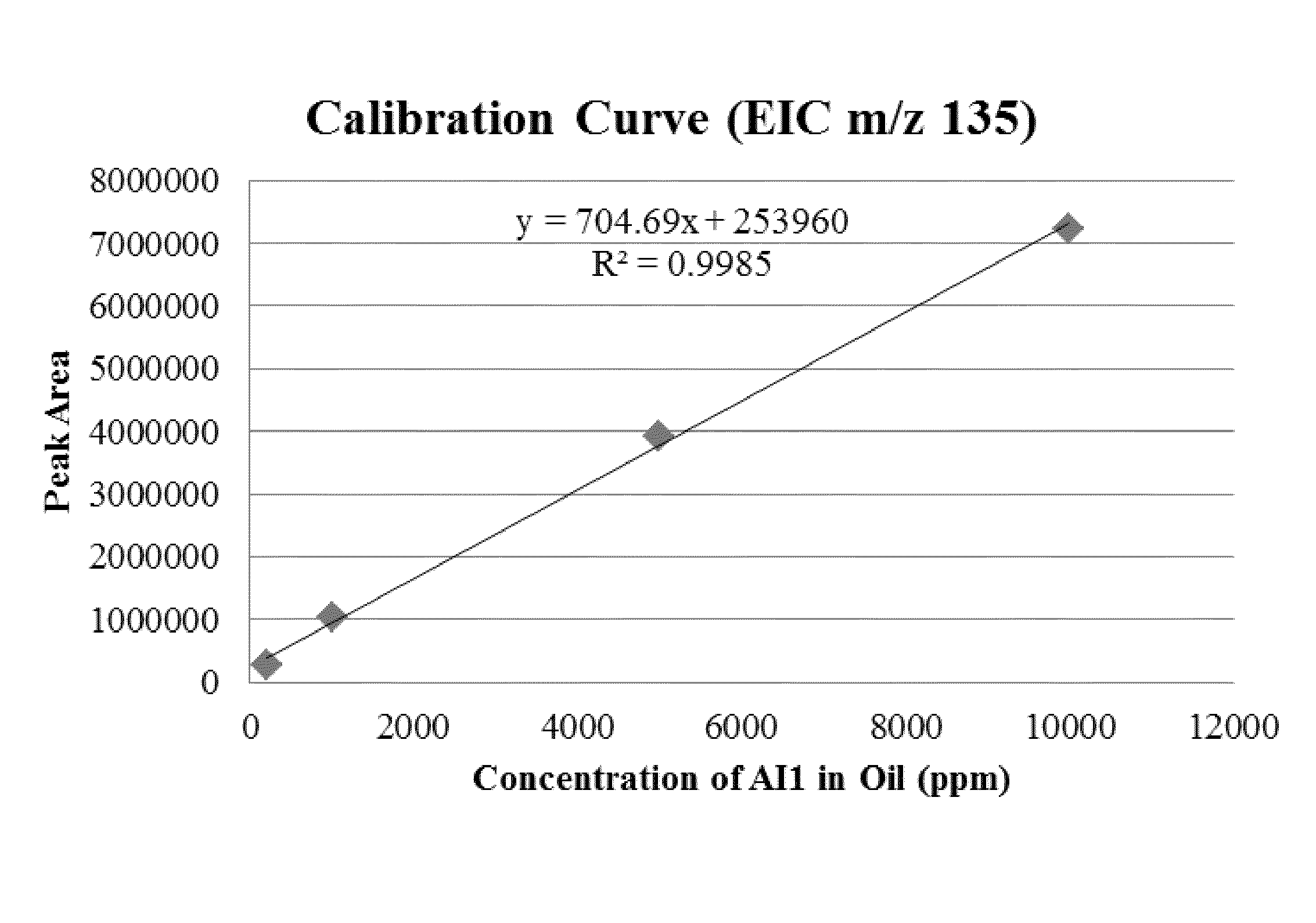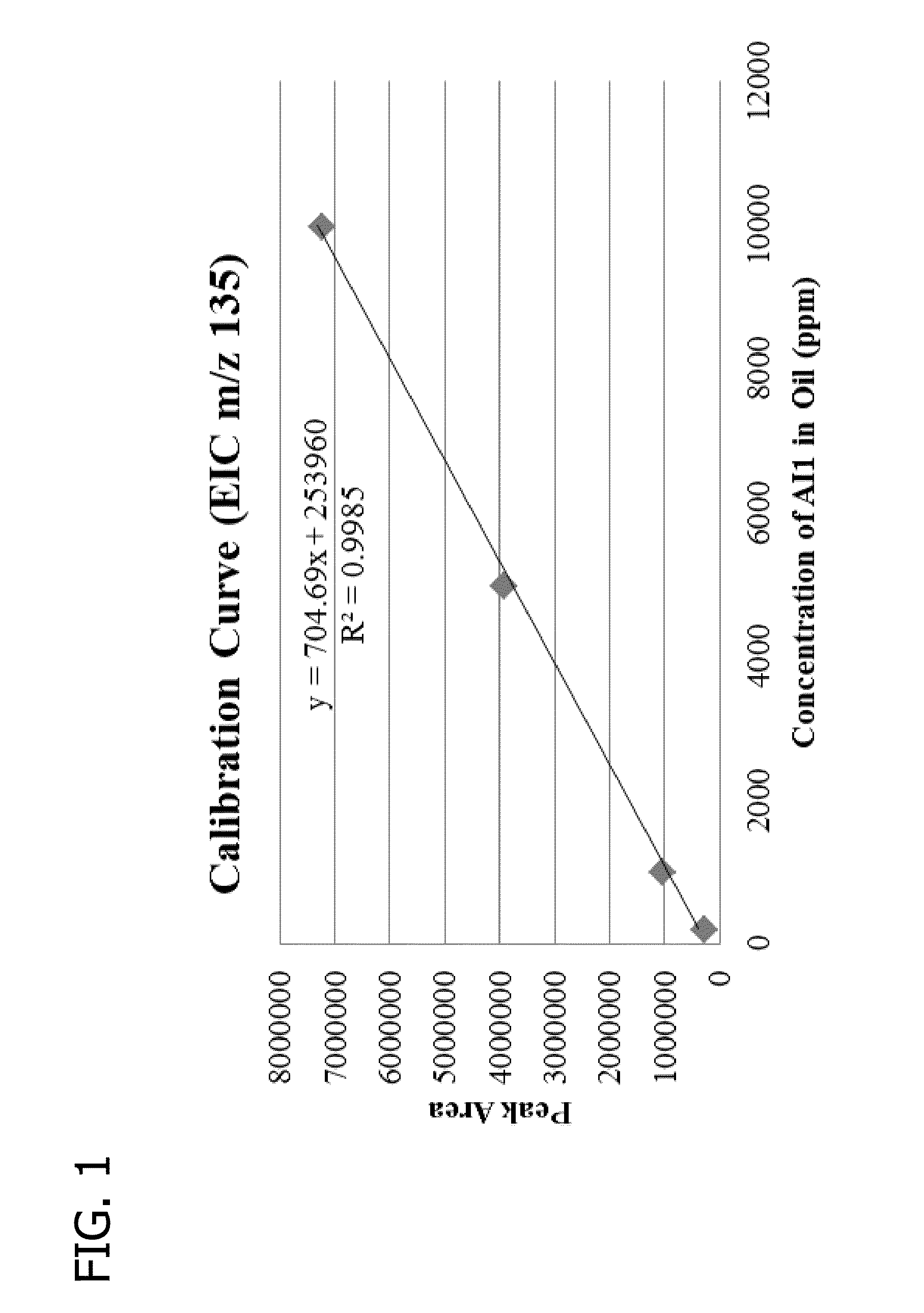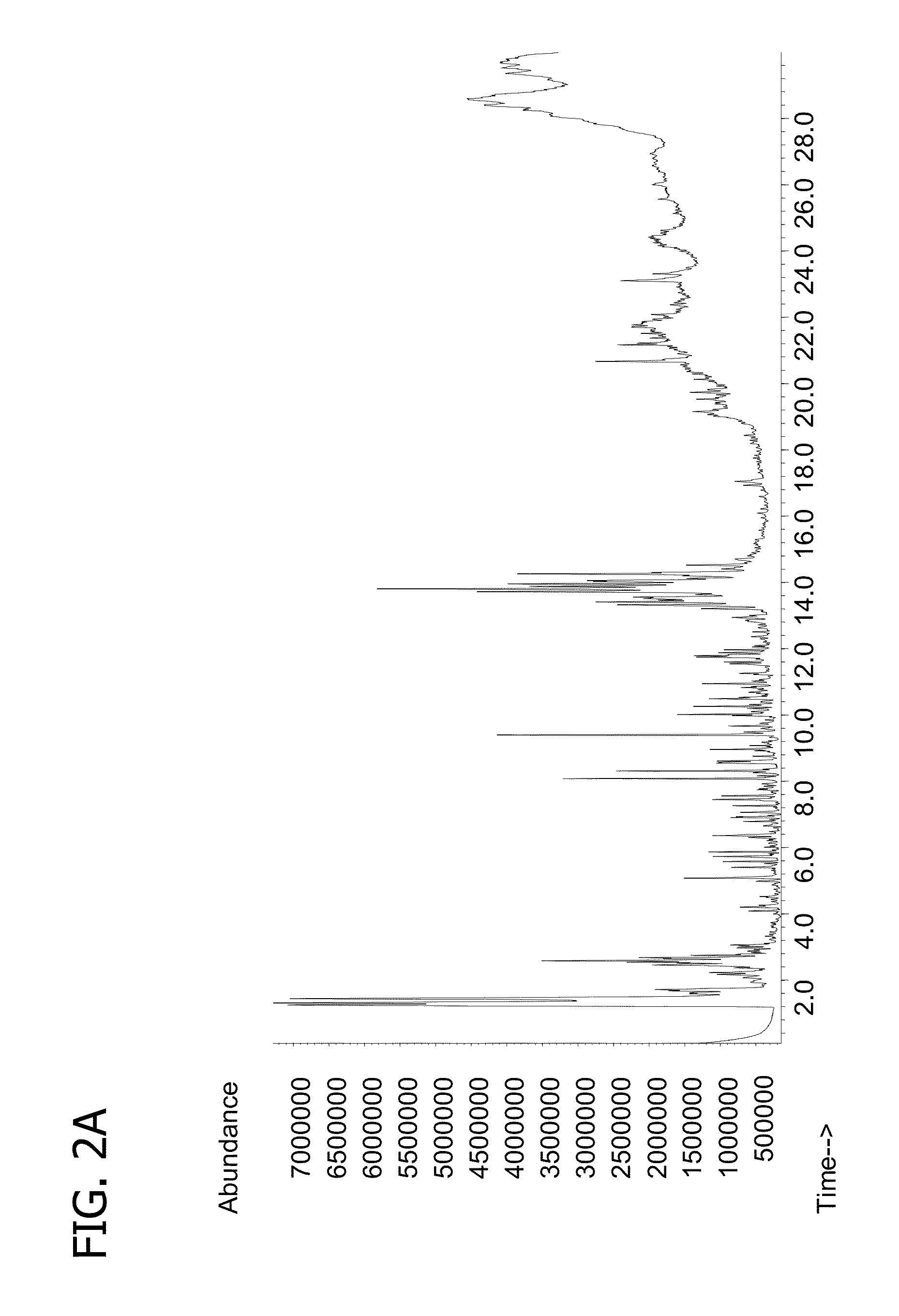Quantification of asphaltene inhibitors in crude oil using thermal analysis coupled with mass spectrometry
a technology of mass spectrometry and thermal analysis, applied in the field of characterization and quantification of macromolecules in hydrocarbon samples of crude oil, can solve the problems of increased fluid viscosity and density, destabilization and precipitation, and production rate declin
- Summary
- Abstract
- Description
- Claims
- Application Information
AI Technical Summary
Benefits of technology
Problems solved by technology
Method used
Image
Examples
example 1
Instrumentation for PY / GC / MS Analysis of Asphaltene Inhibitor AI1 in Crude Oil Samples
[0040]A Double-shot Pyrolyzer PY-2020iD (Frontier Laboratories LTD, Fukushima, Japan) was used for the pyrolysis step. A stainless steel disposable eco-cup was charged with 1-2 mg of crude oil sample, and the sample weight was recorded. A total of 27 production samples of crude oil (e.g., the crude oil were from Mississippi land-based oil wells containing residual AI1 were used as is (e.g., no additional treatments were performed before analysis).
[0041]Volatile components within the crude oil sample were desorbed at a programmed rate of 80° C. to 300° C. at 30° / min (1 minute hold). This was followed instantly by pyrolysis of the residual sample at 550° C. for 0.1 minutes.
[0042]The pyrolyzer unit was directly connected to the injector port of a 7890A Gas Chromatograph (Agilent Technologies Inc., Santa Clara, Calif.) with a series 5973C quadrupole mass spectrometer (Agilent Technologies Inc., Santa ...
example 2
Preparation of a Calibration Curve for the Quantification of Asphaltene Inhibitor AI1
[0045]The asphaltene inhibitor analyzed was AIL available from Nalco Champion as Product No. EC6849A. The major component of the asphaltene inhibitor is a p-nonylphenol-formaldehyde polymer. For the calibration curve of FIG. 1, calibration standards were prepared by dissolved AI1 in untreated oil at 10,000 ppm. A series of standards solutions were made by diluting the stock solution to 5,000 ppm, 1,000 ppm, 200 ppm, and 100 ppm (v / v) with untreated oil. Untreated oil was used as the solvent to prepare the calibration standard solutions in order to compensate for the matrix effect of the complex crude oil. If a solvent other than untreated oil would have been used, the percent recovery in each solvent would have required consideration.
[0046]Calibration points were collected for untreated crude oil spiked with AI chemical AI1 at five concentrations ranging from100 to 10,000 ppm. As shown in FIG. 1, th...
example 3
Quantification of AI1 Residual in Samples of Crude Oil
[0047]A batch of ten crude oil samples was analyzed according to the method in order to determine the concentration of asphaltene inhibitor AI1 Samples of crude oil were collected at progressive time intervals after an inhibitor squeeze over a four day period. The oil samples were collected at the top of the well at the prescribed time. The results are shown in Table 1. This analysis shows that the method used can detect and quantify AI1 present in crude oil without extensive sample preparation or long analysis times.
TABLE 1Concentrations of AI1 residual in oil samplesTimeConcentration of AI1Sample No.(h)(ppm, v / v)untreated105901218349329111436421514.56816237388479621071
PUM
| Property | Measurement | Unit |
|---|---|---|
| temperatures | aaaaa | aaaaa |
| temperatures | aaaaa | aaaaa |
| temperatures | aaaaa | aaaaa |
Abstract
Description
Claims
Application Information
 Login to View More
Login to View More - R&D
- Intellectual Property
- Life Sciences
- Materials
- Tech Scout
- Unparalleled Data Quality
- Higher Quality Content
- 60% Fewer Hallucinations
Browse by: Latest US Patents, China's latest patents, Technical Efficacy Thesaurus, Application Domain, Technology Topic, Popular Technical Reports.
© 2025 PatSnap. All rights reserved.Legal|Privacy policy|Modern Slavery Act Transparency Statement|Sitemap|About US| Contact US: help@patsnap.com



